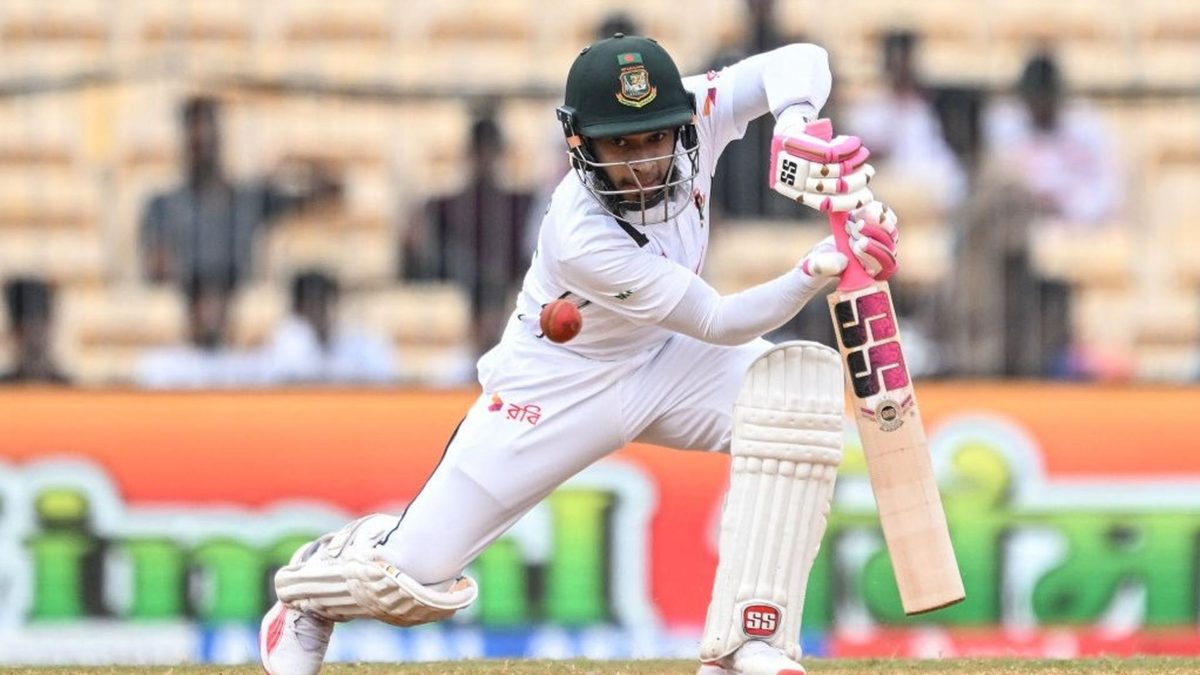
became the first-ever player from Bangladesh to score 6000 Test runs during the first Test against South Africa. Which batters are first to this mark for their respective countries?
Mushfiqur crossed the 6,000-run mark late on day two of the first Test between Bangladesh and South Africa in Mirpur, when he reverse-swept left-arm spinner Keshav Maharaj for four in the 26th over of Bangladesh's second innings.
He became the first player from Bangladesh to score 6000 runs in Test cricket. Tamim Iqbal is the only other with over 5000 runs, at a tally of 5,134 runs. Mushfiqur is also one of only three Bangladesh batters with over 6,000 runs in ODI cricket, alongside Tamim and Shakib Al Hasan.
But who was the first to the 6,000-run mark for each Test-playing nation?
Also read: Mushfiqur Rahim's late-career glow-up puts him in the conversation as Bangladesh's greatest
England: Wally Hammond
The first-ever player to score 6,000 Test runs was England's , who crossed the mark in December 1938, nine months before Test cricket came to a halt due to World War II. Captaining his side, he made 24 & 58 against South Africa in Johannesburg.
Australia: Don Bradman
Rarely do you find a batting list without on it, and this is no different. "The Don" was Australia's first batter to score 6,000 Test runs when he went past the mark in January 1948, scoring 132 & 127* against India in Melbourne. Unsurprisingly, he remains the fastest-ever to 6,000 Test runs, doing so in just 68 innings.
West Indies: Garfield Sobers
20 years after Bradman and 30 after Hammond, became West Indies' first player to the mark of 6,000 Test runs. He narrowly missed out on Bradman's achievement of scoring two centuries in the match, with 152 & 95* to his name against England in Guyana. Sobers was joined in this club just five years later by Rohan Kanhai.
India: Sunil Gavaskar
Perhaps India's first truly great Test batter, Sunil Gavaskar was the country's first batter to score 6,000 Test runs, doing so in January 1981 in Adelaide, with 23 & 5 against Australia. He was joined by Gundappa Viswanath two years later, despite Viswanath debuting two years earlier than Gavaskar in Test cricket.
Pakistan: Javed Miandad
etched himself in Pakistani cricket history as the first to 6,000 runs, when he scored a mammoth 260 against England at the Oval in 1987. Pakistan scored 708 in that innings and managed to enforce the follow-on, but could only draw the match.
Sri Lanka: Aravinda de Silva
A diminutive but tough batter, just about made it to the 6,000-run mark in Test cricket, when he scored 88 against England at Lord's in May 2002. He would play his final Test barely two months after that, scoring a double century in his final innings.
South Africa: Gary Kirsten
South Africa have been a Test nation since the nineteenth century, but their ban from international cricket in the second half of the twentieth century means that their greatest batters have come since 1992. Opener became the first to score 6,000 runs for the Proteas in November 2002, with a half-century against Sri Lanka in Johannesburg.
New Zealand: Stephen Fleming
The last player before Mushfiqur to become the first to 6,000 for their country was New Zealand's , who did so in August 2005 in the course of a knock of 65 against Zimbabwe in Bulawayo. Since then, Brendon McCullum, Ross Taylor and Kane Williamson have all joined him in the 6,000-run club.
Full list: First player to score 6,000 Test runs for each country
| Team | Name | Date reached (Match start date) | Matches Taken |
| England | Wally Hammond | December 24, 1938 | 70 |
| Australia | Don Bradman | January 1, 1948 | 45 |
| West Indies | Garfield Sobers | March 28, 1968 | 65 |
| India | Sunil Gavaskar | January 23, 1981 | 65 |
| Pakistan | Javed Miandad | August 6, 1987 | 86 |
| Sri Lanka | Aravinda de Silva | May 16, 2002 | 90 |
| South Africa | Gary Kirsten | November 8, 2002 | 86 |
| New Zealand | Stephen Fleming | August 15, 2005 | 96 |
| Bangladesh | Mushfiqur Rahim | October 21, 2024 | 93 |
| Zimbabwe | - | - | - |
| Ireland | - | - | - |
| Afghanistan | - | - | - |
Follow Wisden for all cricket updates, including live scores, match stats, quizzes and more. Stay up to date with the latest cricket news, player updates, team standings, match highlights, video analysis and live match odds.








